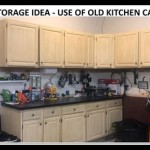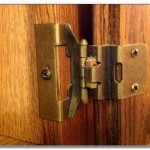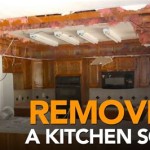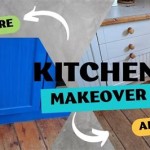How Much Does It Cost To Vinyl Wrap Kitchen Cabinets?
Kitchen renovations can be expensive, often involving significant costs for materials, labor, and potential structural modifications. Vinyl wrapping kitchen cabinets presents an alternative approach to updating their appearance without the complete replacement of existing cabinetry. Understanding the factors influencing the cost of vinyl wrapping is crucial for homeowners considering this option.
Vinyl wrapping, also known as vinyl coating or cabinet wrapping, involves applying a thin, adhesive vinyl film to the surface of kitchen cabinets. This film comes in a wide array of colors, patterns, and textures, allowing for customization to suit various aesthetic preferences. The process typically involves cleaning and preparing the cabinet surfaces, applying the vinyl film, and smoothing out any air bubbles or imperfections. The cost effectiveness of vinyl wrapping makes it an increasingly popular choice for homeowners seeking a refreshed kitchen aesthetic without breaking the bank.
The cost of vinyl wrapping kitchen cabinets can vary significantly based on several factors, generally cheaper than replacing the entire cabinetry. This analysis will outline the primary elements that determine this cost, providing a comprehensive understanding to help homeowners estimate the potential expense involved.
Factor 1: Size and Complexity of the Kitchen
The size of the kitchen and the number of cabinets requiring vinyl wrapping are primary determinants of the overall cost. Larger kitchens with a greater number of cabinets will naturally require more vinyl material and labor, leading to a higher price. The complexity of the cabinet design also plays a significant role. Cabinets with ornate detailing, curved surfaces, or intricate moldings are more challenging to wrap, demanding greater skill and time, which translates to increased labor costs.
The dimensions of each cabinet door and drawer front will need to be measured precisely to calculate the required amount of vinyl. Professional installers typically charge per square foot of vinyl applied, and this measurement forms the foundation of the project estimate. Beyond the surface area, the internal aspects of the cabinets might be wrapped depending on the chosen style, which may necessitate precise cuts and a more labor-intensive application process. If the cabinet design incorporates features that require more meticulous wrapping, the task becomes more time consuming and expensive.
The layout of the kitchen also contributes to the pricing structure. A kitchen with numerous tightly spaced cabinets might require more meticulous maneuvering and precise cuts during the installation process. This increased level of difficulty will likely extend the project's duration and raise labor costs. Furthermore, if the kitchen layout restricts access to certain cabinets, the wrapping process may become more physically demanding, potentially affecting the price.
Factor 2: Type and Quality of Vinyl Material
Vinyl films are available in a wide range of qualities and finishes, each affecting the final project cost. Lower-grade vinyl films are generally less expensive but may lack durability or be more prone to tearing or fading. Higher-quality vinyl films, on the other hand, offer superior resistance to scratches, stains, and UV damage, ensuring a longer lifespan and a more professional-looking finish. The texture and pattern also factor into the market price. For example, a matte finish vinyl wrap can be more expensive than a glossy one, as it resists fingerprints better.
The thickness of the vinyl film also impacts its cost. Thicker vinyl films are generally more durable and easier to work with, minimizing the risk of bubbles or creases during installation. However, they also tend to be more expensive per square foot. The choice of vinyl material should be based not only on budget considerations but also on the anticipated usage and wear and tear the cabinets will endure over time.
Specialty vinyl films, such as those with metallic, wood-grain, or textured finishes, typically command a higher price than standard solid-color films. These specialty films often feature intricate patterns and enhanced visual appeal, but their complex manufacturing processes contribute to the increased cost. Additionally, some vinyl films are specifically designed for exterior applications or high-moisture environments, and these may be more expensive than standard interior-grade films.
Factor 3: Labor Costs and Professional Installation
While some homeowners may consider vinyl wrapping kitchen cabinets as a DIY project, professional installation is generally recommended to achieve a high-quality, durable, and aesthetically pleasing result. Experienced installers possess the necessary skills, tools, and techniques to properly prepare the cabinet surfaces, apply the vinyl film without bubbles or wrinkles, and ensure a seamless finish. Labor costs can vary depending on the geographical location, the complexity of the project, and the installer's experience and reputation.
Professional installers typically charge either an hourly rate or a fixed price per cabinet or square foot. Hourly rates can range from $50 to $100 per hour, while fixed prices may vary from $100 to $400 per cabinet, depending on its size and complexity. It is vital to obtain multiple quotes from different installers to compare prices and assess their qualifications and experience. Checking online reviews and asking for references can offer insight into the quality of their workmanship and customer service.
The cost of labor also encompasses the preparation stage. This preparation work includes cleaning, sanding, and priming the existing cabinets. Depending on the state of the original cabinets, more in-depth prep work might be needed. For example, cabinets may need to be filled to make the surface smooth for the vinyl wrap. This can affect the amount of time needed for the project and, thus, the labor charges incurred.
Additional Cost Considerations
Beyond the core factors of size, material, and labor, there are several other potential cost considerations to keep in mind when planning a vinyl wrapping project. These include the cost of removing and reinstalling cabinet hardware, such as handles, knobs, and hinges. Replacing these hardware elements can significantly enhance the overall aesthetic of the wrapped cabinets, but it adds to the total project expense.
Depending on the condition of the existing cabinets, additional surface preparation might be necessary. This could involve filling in cracks or dents, sanding down rough surfaces, or applying a primer to ensure proper adhesion of the vinyl film. While minor surface imperfections may not be noticeable beneath the vinyl wrap, significant damage may require professional repairs to ensure a smooth and uniform finish.
In some cases, it may be necessary to remove the cabinet doors and drawer fronts from their frames for easier wrapping. While this can simplify the installation process and improve the quality of the finished product, it may also add to the labor costs. Furthermore, if the cabinets are particularly old or fragile, removing the doors and drawers may pose a risk of damage, requiring additional care and potentially incurring repair costs.
The geographical location can also influence the cost of vinyl wrapping. In areas with a higher cost of living, labor rates and material prices tend to be higher. Additionally, the availability of skilled installers and the demand for vinyl wrapping services may impact the overall cost of the project.
Finally, it is essential to factor in any unforeseen expenses that may arise during the project. This could include the need for additional materials, unexpected repairs, or delays due to weather or other unforeseen circumstances. Setting aside a contingency fund of 10-15% of the total project cost can help to cover such unexpected expenses.
While specific figures can vary, a general estimate for vinyl wrapping kitchen cabinets typically ranges from $1,000 to $5,000, depending on the variables outlined above. Obtaining multiple quotes from reputable installers and carefully considering the factors that influence cost can help homeowners make informed decisions and achieve a satisfactory outcome within their budget.

How Much Does Kitchen Door Wrapping Cost In 2024 Checkatrade

How Much Does Kitchen Door Wrapping Cost In 2024 Checkatrade

How Much Does Kitchen Door Wrapping Cost In 2024 Checkatrade

Spray Paint Or Vinyl Wrap For Kitchen Cupboards Upvc Painting

Is It Better To Paint Or Vinyl Wrap Kitchen Cupboards

Are Vinyl Wrap Kitchens Any Good Wespray

Kitchen Wrapping Cost S 2024 This Please

Vinyl Wrap For Kitchen Cupboard Doors Restoration

Re Bubbling Or Ling Vinyl Wrap Kitchens With Spray Painting Wespray

The Procoat Process Kitchens
Related Posts








